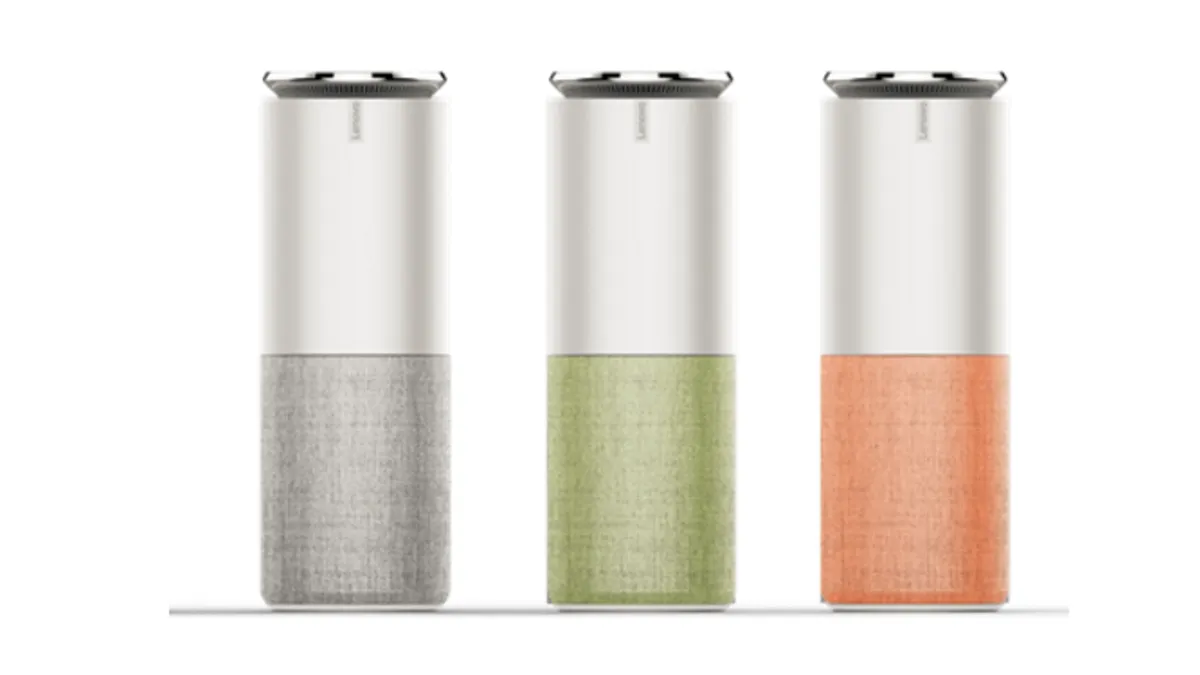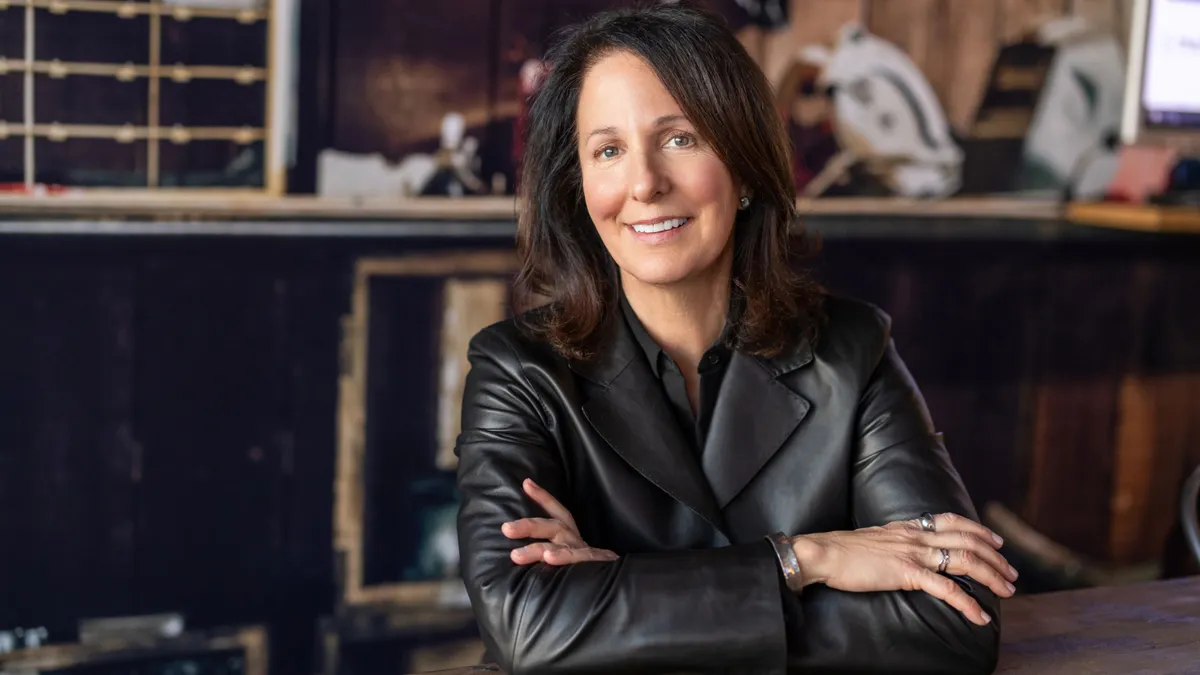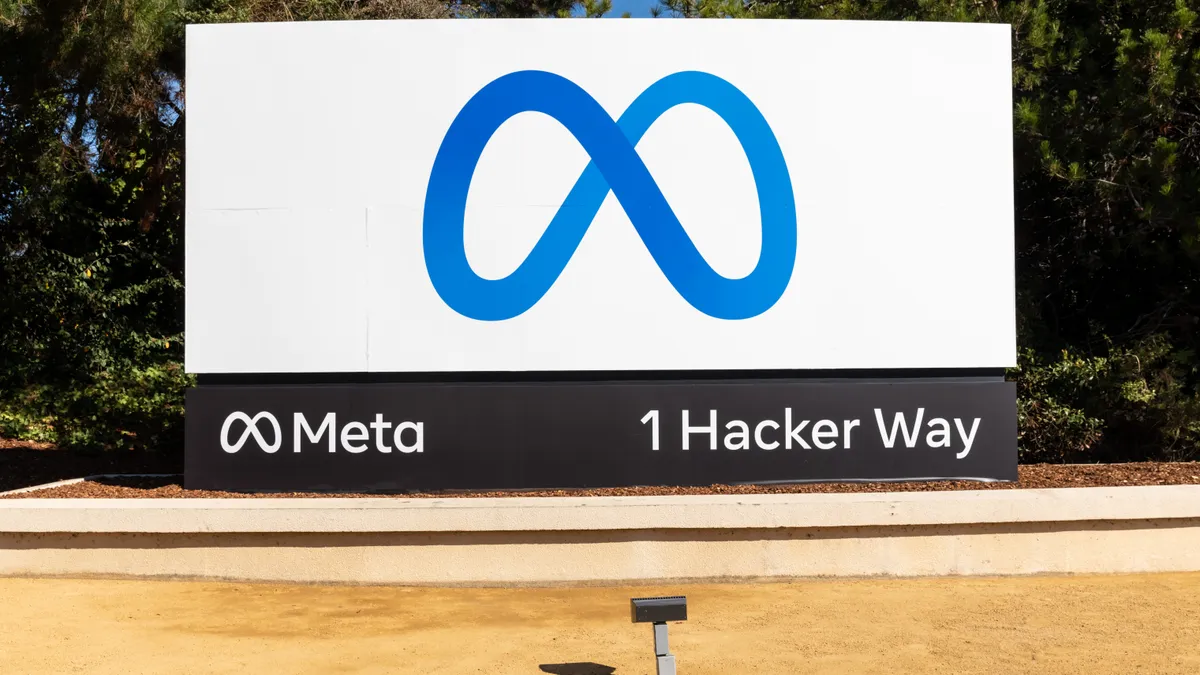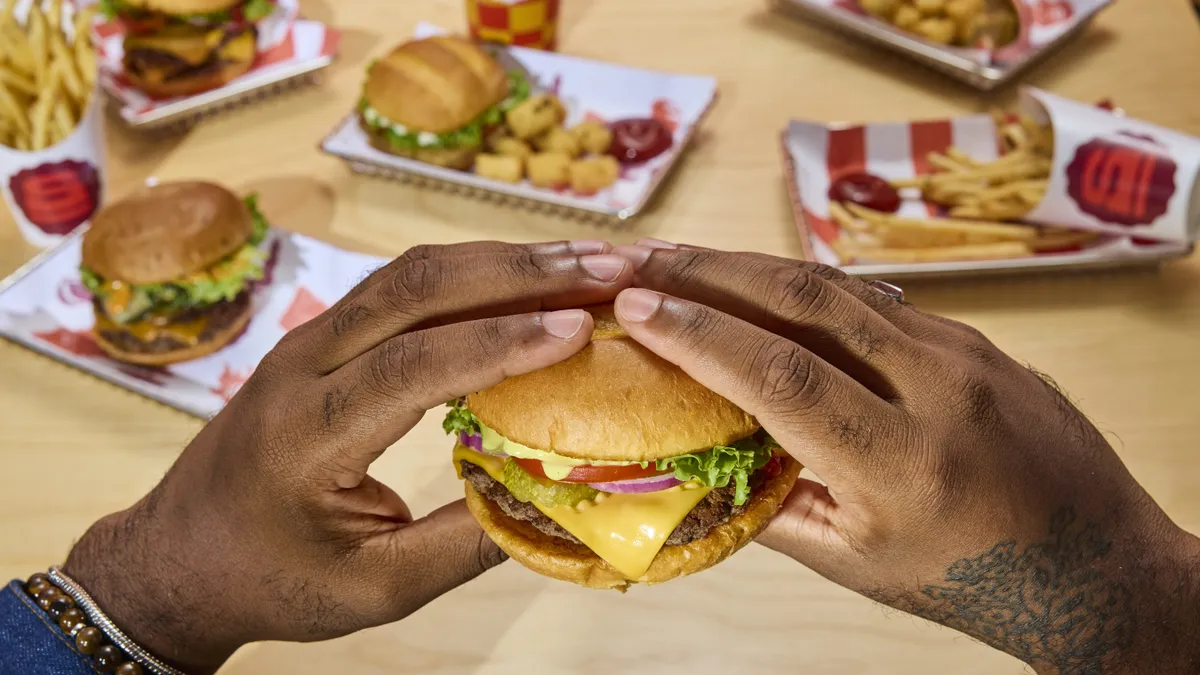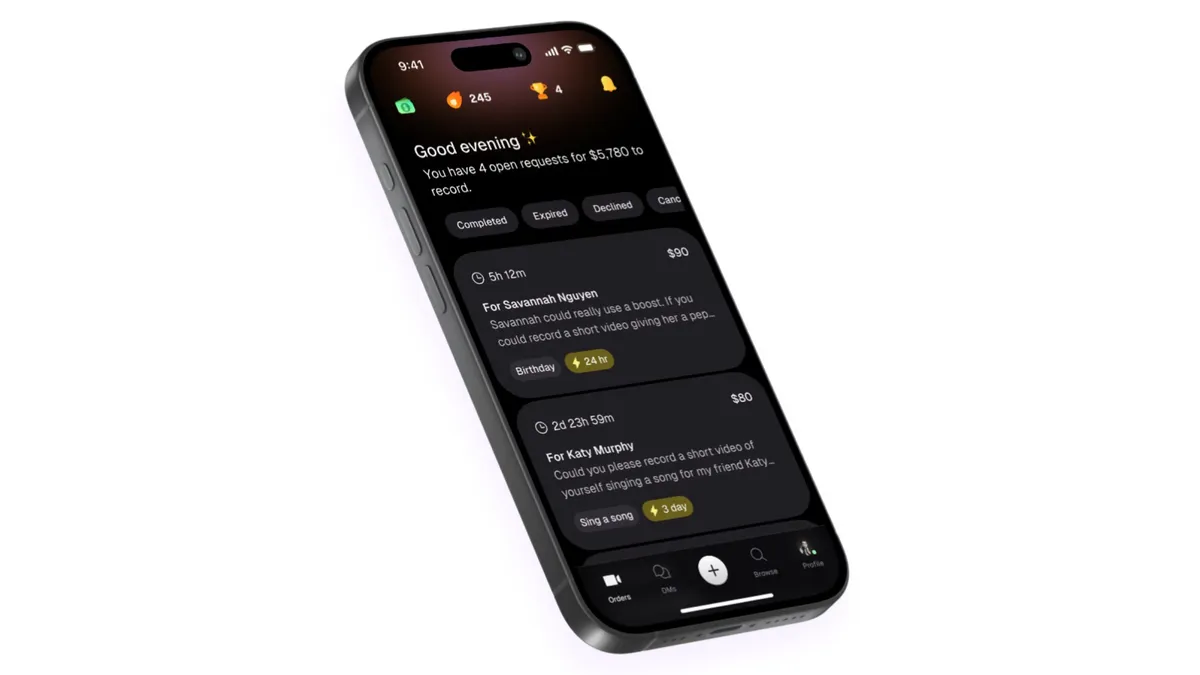This year's Consumer Electronics Show, an annual showcase for technology innovation, gave marketers a peek into what the year ahead might bring for new ways to reach an audience, with both voice-driven and virtual reality strategies both looming large.
At this year's show, it was obvious that voice-driven AI-powered digital assistants are becoming increasingly popular and competitive. Amazon, already a market leader, is seeing its Alexa software included in an increasing range of consumer products. Marketers should be tracking this space and figuring out how to best tap into the audience of Alexa and other digital assistants.
“The widespread integration of ‘aware’ home technology will be a notable opportunity for marketers," Nathan Burgess, account supervisor at Bliss Integrated Communication, told Marketing Dive. "Whether that’s camera-enabled refrigerators or the various desktop home assistants, being the early mover and integrating a client’s offering into that technology so that it becomes the go-to app for that particular need, rather than an also-ran, will be key.”
Virtual reality was big news at CES as well. The emergence of VR and augmented reality should continue to be a space for marketers to track through 2017. Not every industry commenter was overwhelmed by VR offerings at CES, but the tech was pushed by manufacturers like Sony and Samsung through the holiday season, and VR hardware looks to be making its long-promised breakthrough as a consumer product with wide appeal.
"The buzz of this year's CES event was really all about the Internet of Things, Amazon and Google with their remarkable new home assistants, and then capping the week off on Friday when someone set up two Google chatbots — Estragon and Vladimir — and let them have a conversation with each other live on Twitch," Scott Swanson, CEO of Aki Technologies, told Marketing Dive.
Here is a rundown of some the most interesting on display at CES that is pertinent for marketers:
Amazon’s Alexa digital assistant makes news
Even though Amazon didn’t have a formal presence at CES, its Alexa technology made waves anyway with companies ranging from automakers to smartphone manufacturers announcing Alexa-powered technology.
The voice controlled technology best known for powering Amazon’s Echo and Dot devices now has over 7,000 skills according to Amazon and it’s turning up in much more than Amazon’s own hardware devices. LG announced a new smartfridge, and Whirlpool is including the tech in a number of home appliances. Simplehuman even introduced a voice-activated trash can.
On the automotive front, Ford partnered with Amazon to bring Alexa to its cars via the SYNC 3 AppLink. What might be most interesting about this use of the technology is it’s designed to eventually bridge the gap between the car and home. The initial integration is connecting cars with in-home devices like Echo, Dot and Amazon Tap later this month allowing users to control functions like starting and stopping the engine and locking and unlocking doors from inside their home for owners of electric vehicles. This summer Ford is expected to roll out Alexa voice commands inside certain models where drivers and passengers can command home lighting, security and garage doors from inside the car as well as perform web searches, listen to audiobooks, access navigation and update Amazon shopping lists.
Other car makers got into the act with competing technology. Nissan and Volvo are both taking advantage of Microsoft’s Cortana for their respective connected car initiatives, and Hyundai is tapping Google Home for its smartcar.
Smartphone maker, Huawei announced the Mate 9, the first smartphone with Alexa built into its core features, competing with Apple’s Siri and Google Assistant. Smartphone users have become used to controlling smartphone functions such as searches and navigation via AI voice assistants and bringing Alexa to a mobile device is a logical fit.
Lenovo even introduced an Echo-like device called Lenovo Smart Assistant that makes use of Alexa for its functionality but is expected to be marketed at a lower price than Echo and includes a Harman Kardon upgrade option for improved audio.
Other companies getting into the home assistant space include Baidu and Ainemo — Chinese search firm and consumer electronic companies respectively — which released “Little Fish,” a voice controlled family robot powered by Baidu’s AI-driven voice assistant, and Mayfield Robotics announced Kuri, a home robot described as an Echo with wheels and eyes adding an entirely new level of mobility for home assistants although for now it’s functionality remains similar to Echo and Google home with an added camera. USA Today reported that 25 companies showcased robots at this year’s CES.
Mattel has a new kids room platform called Aristotle that is voice activated, AI-driven and designed to comfort, entertain, teach and assist kids during each development stage, and was created along with Microsoft, Qualcomm Technologies, Inc., and Silk Labs. The connected hub and camera will be formally released this summer.
Not all smart devices announced at CES took advantage of Alexa. Samsung increased its Family Hub refrigerator line from four to 10 models and added new app partners to improve app integration.
“After just one year of availability, the Family Hub has transformed the concept of the connected kitchen by enabling users to order and manage grocery shopping, connect with family and friends, and access entertainment right from the comfort of their kitchen. Taking flexibility and functionality to a whole new level, the Family Hub 2.0 is entirely about helping consumers better manage as well as enjoy their lives,” said Byung-Sam Seo, President of Home Appliances at Samsung Electronics, in a company press release.
Virtual reality heads toward the mainstream
Along with its Alexa-powered smartphone, Huawei also announced two of its smartphones will support Google’s Daydream View VR headset, and AsusTek Computer announced its ZenFone AR will support both Daydream and Google’s Tango software for AR. Even though Google’s VR and AR are still in early development, the tech giant has put R&D resources into the emerging tech and this year should realize the first wave of consumer interaction with VR and AR at scale, providing marketers with more data on how those devices will be used and how audiences are willing to engage with the technology.
VR hardware comes in two basic flavors — headsets like Daydream and Samsung Gear that require a compatible smartphone as the display, and tethered devices like Facebook’s Oculus Rift and HTC Vive that connect with a computer to offer a more intense VR experience. Lenovo announced a new headset at CES designed to compete with Oculus and Vive but at a lower price point and in a lighter and smaller device.
Honda has teamed up with Dream Works to create VR and AR content to enhance the in-vehicle experience for passengers. The partnership’s focus is a software development kit fusing live telematics data to tie the vehicle’s motion to in-car entertainment, education and information applications, bringing to life the Honda Dream Drive prototype and giving passengers a completely new experience while riding in Honda cars. CES attendees were able to view the Dream Drive at Honda’s booth.
Advertising platforms chime in
CES might be focused on products and innovations, but publishers take advantage of the spotlight to introduce new ad offerings as well. AOL announced BrandBuilder, an ad creative framework designed to drive brand awareness, sales and innovation using AOL data and platforms. It spans display, video and mobile with three subsets: Director, driving awareness and emotional connections with consumers; Buyer, driving conversions and brand sales; and Beta, driving what AOL calls a “cadence of innovative, exclusive ad experiences.”
EBay was an early adopter of the framework and Olivier Ropars, Senior Director of Global Internet Marketing at eBay, said in an AOL press release that BrandBuilder helped create a “less intrusive” and “more relevant” experience for eBay customers.
Turner Sports also used CES to announce Turner Ignite Sports, an expansion of its Ignite team that already covers news, entertainment and kids properties, allowing marketers to streamline strategies across channels and demographic groups.
Turner Ignite Sports taps the cable company’s partnerships including NCAA, March Madness, the College World Series, Bleacher Report and ELEAGUE, and its almost 1,000 live sports events include March Madness Music Festivals, March Madness Fan Festivals, Bleacher Ball, CES Sports Business Innovation, and TNT Road Show, and will bring sports fans to brands through four areas of expertise including its licenses and partnerships with those sports properties and live sports events, as well as creative services for content and data analytics and targeting.


